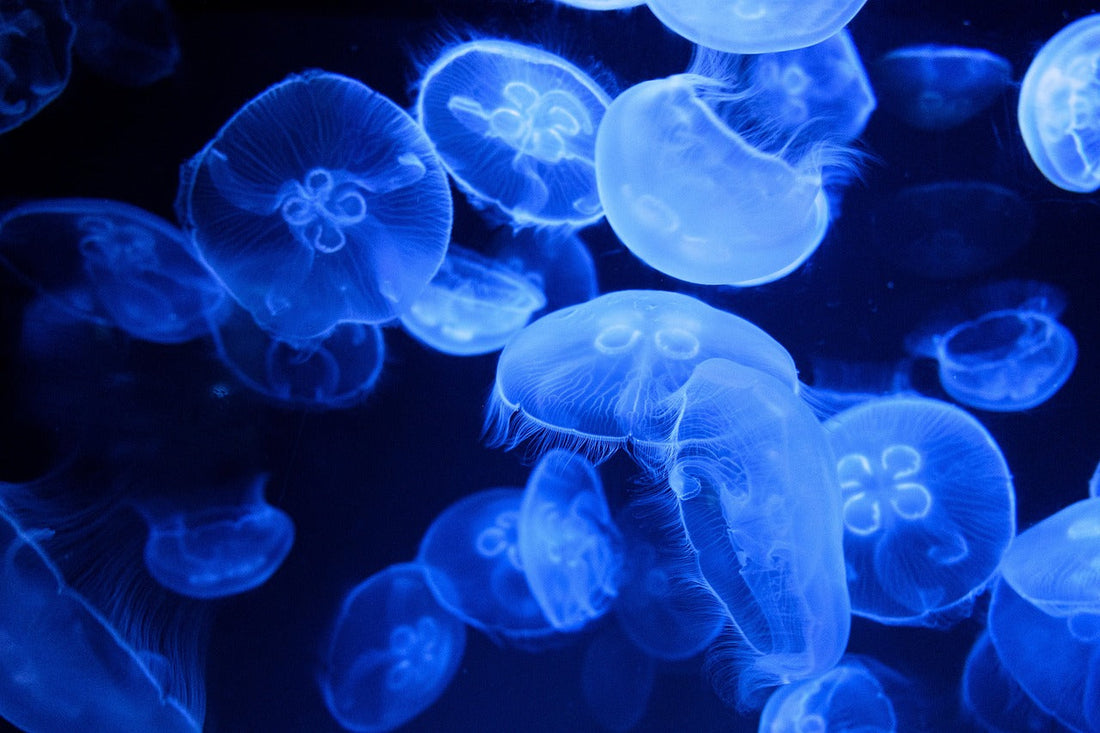The Science and Wonder of Bioluminescence: Nature’s Living Light
Pelagic ProblemsImagine drifting through the ocean at night. Suddenly, the water around you comes alive with shimmering trails of blue-green tiny flashes of light as if the stars have fallen into the sea. This isn't science fiction. It's bioluminescence, one of nature’s most beautiful and mysterious phenomena.
What Is Bioluminescence?
Bioluminescence is the ability of living organisms to produce and emit light. This light is created through a chemical reaction that typically involves a light-emitting molecule called luciferin, an enzyme called luciferase, oxygen, and other compounds depending on the organism. When luciferin reacts with oxygen, catalyzed by luciferase, the result is a release of energy in the form of visible light.
Unlike most artificial lights, this is "cold light" gives off little or no heat. That means organisms can glow brightly without burning up energy inefficiently, an elegant solution evolved over millions of years.
Where Is Bioluminescence Found?
Bioluminescence is most commonly found in the ocean, especially in the deep sea, where sunlight cannot reach. It is estimated that up to 90% of deep-sea creatures produce bioluminescence in some form. However, it also occurs on land in creatures like fireflies, glow worms, and certain types of fungi.
Some fascinating examples include:
- Dinoflagellates – Tiny planktonic organisms that cause waves or wakes to sparkle at night.
- Anglerfish – Deep-sea predators with a glowing lure on their heads to attract prey.
- Vampire squid – Not as scary as they sound; they eject glowing mucus to confuse predators.
- Panellus stipticus – A North American mushroom that glows in the dark forests.
Why Do Creatures Glow?
Bioluminescence evolved for different reasons in different species, and the function often depends on the environment:
- Defense: Some animals use it to distract or deter predators. For example, some squid release a bioluminescent cloud instead of ink.
- Camouflage: Deep-sea creatures may glow from below to blend with the faint light above, a trick called counter-illumination.
- Attraction: Fireflies and deep-sea anglerfish use light to attract mates or prey.
- Communication: Flashing patterns of light can be a form of signaling between members of the same species.
Bioluminescence and Human Discovery
The study of bioluminescence has led to exciting breakthroughs in science and medicine. The most famous example is Green Fluorescent Protein (GFP), originally derived from jellyfish. GFP has revolutionized molecular biology by allowing scientists to visualize processes inside living cells—earning a Nobel Prize in 2008.
Other bioluminescent compounds are being explored for cancer detection, brain mapping, environmental monitoring, and even creating sustainable light sources.
A Conservation Message
While bioluminescence feels like a magical gift of nature, it’s also a fragile one. Coastal bioluminescent bays, like those in Puerto Rico, are affected by pollution, overdevelopment, and boat traffic. Deep-sea environments, where many glowing organisms live, are under increasing threat from deep-sea mining and climate change.
By protecting marine ecosystems and supporting responsible tourism, we can help preserve the habitats of these glowing organisms and continue to learn from them.
Final Thoughts
Bioluminescence reminds us of the wonder that still exists in nature, much of it still undiscovered in the depths of our oceans. It’s not just beautiful but functional, evolutionary, and inspirational. Whether lighting up the night for survival or inspiring scientific breakthroughs, bioluminescent organisms prove that the natural world still holds many secrets worth protecting.

